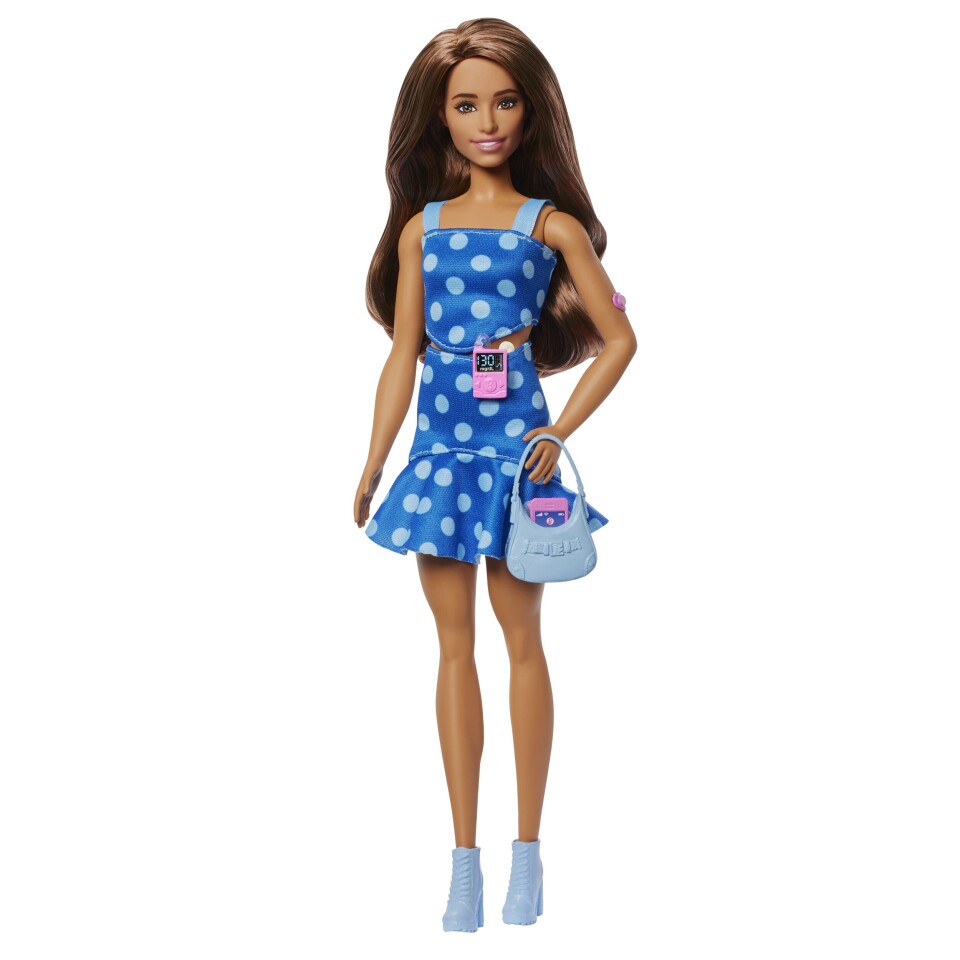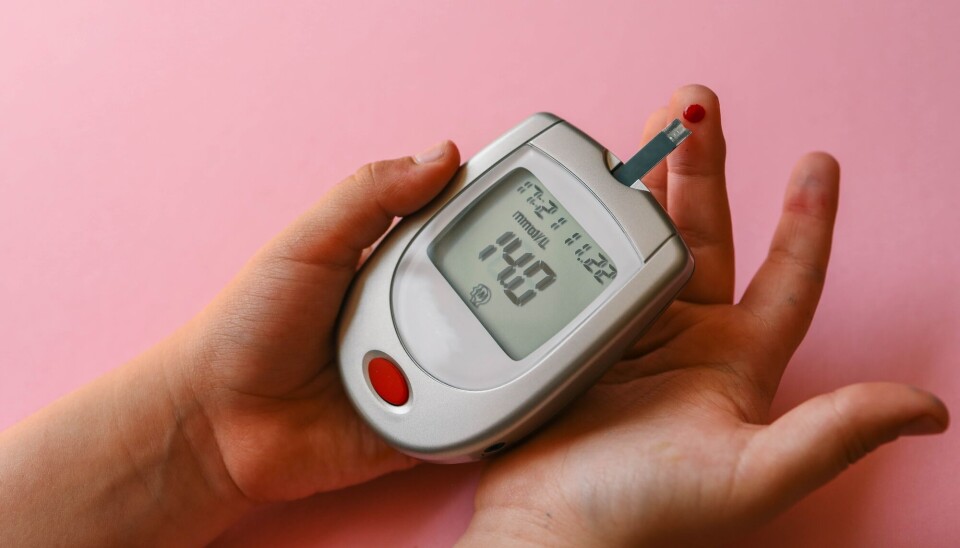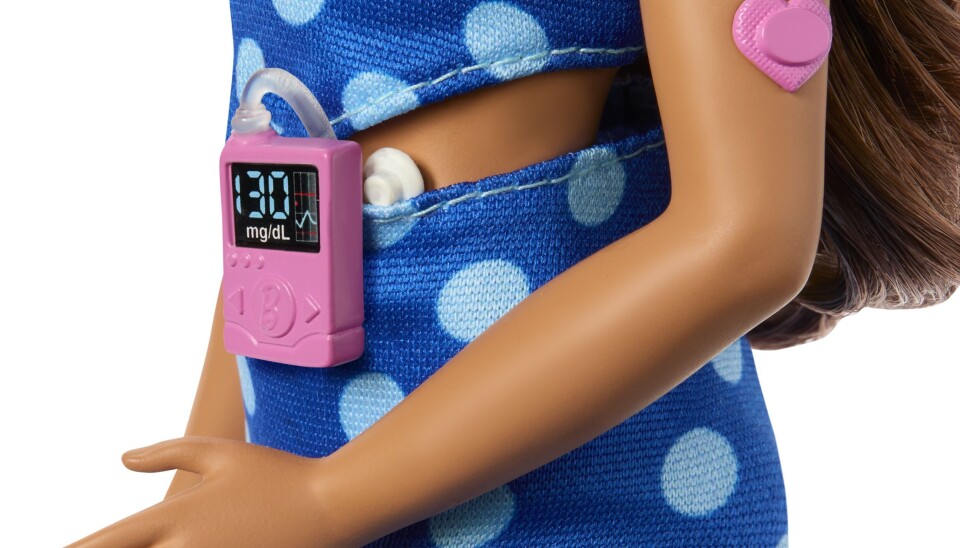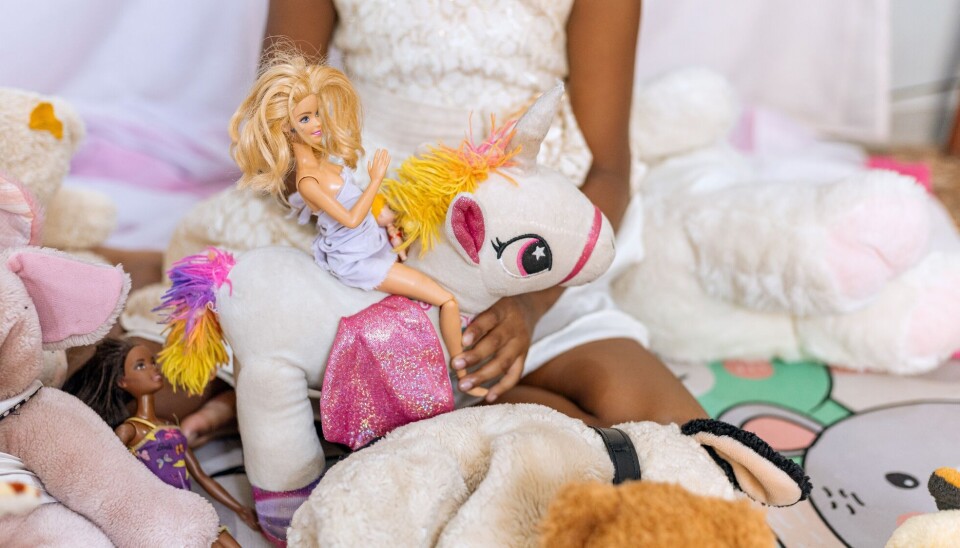New Barbie doll with diabetes: "It could help a lot of people"
A researcher believes the doll may make it easier to talk openly about diabetes.

Barbie is a familiar figure to most people.
The very first Barbie doll was launched in 1956. Since then, millions of dolls have been sold worldwide.
Most viewed
Now, a new Barbie doll with type 1 diabetes is joining the lineup.
This is the first time Mattel, the toy company behind Barbie, has created a doll with this condition.
The goal is to help children learn about the disease and feel more included.
What is diabetes?
Type 1 diabetes is a condition where the body can't produce insulin on its own.
Insulin helps the body turn sugar from food into energy.
People with diabetes need to check the sugar levels in their blood.
It's important that the blood sugar doesn’t get too high or too low.
If it gets too low, they may feel dizzy, shaky, or nauseous. If it’s too high, they may feel thirsty and tired.
If the blood sugar level isn't corrected, they can become very ill.
That’s why some people need to use an insulin pump or take insulin injections to help their body function properly.

Helps children understand the world
The new Barbie doll comes with equipment used by many children with diabetes.
She has a small sensor on her arm that checks blood sugar levels.
The doll also features an insulin pump that delivers the insulin the body needs.
Although the equipment is not real, it’s designed for play to show how diabetes treatment works.
"Barbie helps shape children’s early perceptions of the world, and by reflecting medical conditions like type 1 diabetes, we ensure more kids can see themselves in the stories they imagine and the dolls they love," says Krista Berger from Mattel, the company that makes Barbie dolls.

"Can provide knowledge about diabetes"
Lise Touzri is the head of the Norwegian Diabetes Association's National Children and Family Committee. She thinks the Barbie doll is a great way to make diabetes more visible and understood.

"It can be part of education and provide knowledge about diabetes. I believe it could help a lot of people," she says.
Touzri has a son with diabetes and says it's been important for him to feel represented in the toys he plays with.
"There are many children and young people with diabetes who would rather hide their illness," she says.
That's why she believes this doll can make it easier to talk about diabetes.
"It can help make the illness more familiar and less scary, especially if diabetes becomes a natural part of play from a young age," she says.
Representation matters
Ingvild Kvale Sørensen, who researches children and youth, says that play can help children understand who they are.
"It's often important that they can see themselves in their toys," she says.
Sørensen thinks the new Barbie could be a valuable tool.
It can show that there are many different ways to be, whether you have an illness or not.
She also emphasises that play doesn't always need to be completely realistic. There should also be room for imagination and dreams.
At the same time, she encourages thinking about who the toys are really for.
"Are the kids the ones who want these dolls, or are the parents making the choice? And will the children actually enjoy playing with them?" she asks.

The power of play
Can play help children understand themselves better?
In a recent study, researchers interviewed 48 children aged 8 to 13 who play Roblox, Minecraft, and Fortnite.
Many of the children said they created avatars that looked like themselves. Some used their characters to express who they are, while others experimented with how they wanted to be.
Researchers concluded that these digital characters offered kids a way to explore and express their identity through gaming.
Another study was conducted at a children's hospital in the USA from 2003 to 2018.
Children with diabetes were given opportunities to practice giving insulin and measuring blood sugar levels using teddy bears and stuffed animals.
Hospital staff guided the play to help children better understand their condition.
Many parents and children said the play made the children feel more confident and comfortable during medical visits.
The researchers found that play helped children feel more secure and better prepared to manage their condition and treatment.
———
Translated by Alette Bjordal Gjellesvik
Read the Norwegian version of this article on ung.forskning.no
References:
Fu et al. Understanding Children's Avatar Making in Social Online Games, arXiv:2502.18705, 2025. DOI: 10.48550/arXiv.2502.18705
La Banca et al. Play-Based Interventions Delivered by Child Life Specialists: Teachable Moments for Youth With Type 1 Diabetes, Journal of Pediatric Health Care, 2020. DOI: 10.1016/j.pedhc.2020.02.002

Subscribe to our newsletter
The latest news from Science Norway, sent twice a week and completely free.























































